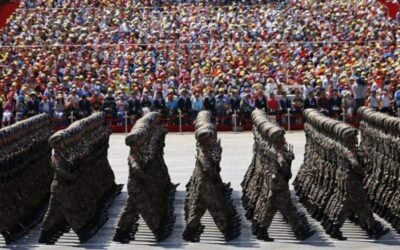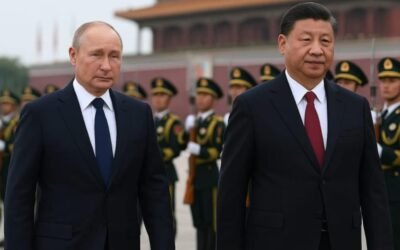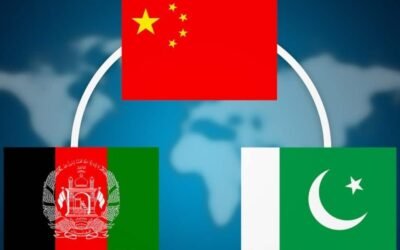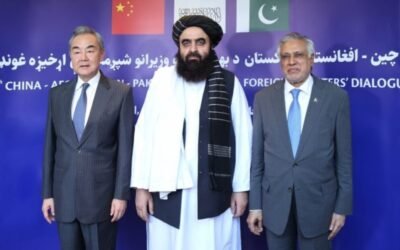China-Pakistan Economic Corridor (CPEC) is often called a 21st-century revival. Phase I (2013-2020) focused on energy and infrastructure. Power plants, highways, and the new Gwadar port were built. Now Phase II is underway. Pakistan has adopted a forward-looking strategy. Phase II emphasizes industrialization, trade, and connectivity. Islamabad has approved Special Economic Zones (SEZs) for manufacturing. Transport networks have been expanded. Trade has been liberalized to leverage Pakistan’s key position between China, the Middle East, and Central Asia.
You May Like To Read: Chinese FM Wang Yi in Islamabad for Sixth Round of Strategic Dialogue
Industrial & Trade Initiatives
Pakistan is actively courting Chinese investment. The government has waived many approvals to ease factory setup for Chinese firms. In Karachi, the ML-1 railway upgrade, a Pak-China joint project, will raise train speeds from 65 to over 100 km/h. New highways and optical fibers are being extended across Khyber-Pakhtunkhwa. Pakistan also upgraded its Free Trade Agreement with China. Now 1047 Pakistani products can enter China tariff-free, up from 300-400 earlier. Economists expect FTA-II to boost exports of textiles, agriculture, and pharmaceuticals.
Major SEZs are planned, such as the Allama Iqbal Industrial Park in Faisalabad, projected to employ 300,000 workers. Faisalabad, Pakistan’s third-largest economic hub, already has a strong base in textiles, engineering, chemicals, and agriculture. The new zone aims to boost GDP, increase exports, support import substitution, and promote socio-economic development. Collaboration with Chinese entrepreneurs will provide employment, reduce poverty, and improve living standards in Faisalabad and nearby areas. In Gwadar, new facilities, including a hospital, airport expansion, and a technical college, are under construction to create an export hub.
🚨BREAKING: Gwadar set to receive a $100M teaching hospital offering advanced healthcare and training. pic.twitter.com/djqZ1aQ41r
— The Daily CPEC (@TheDailyCPEC) August 21, 2025
CPEC Phase II also focuses on new trade corridors. Gwadar port expansion is central. Pakistan plans direct shipping lines and a ferry service to Gulf countries. Analysts say this will lower transport costs and integrate Pakistan into wider supply chains. ChinaDaily reports it will inject fresh momentum into CPEC and boost trade. A thriving Gwadar can diversify Pakistan’s trade and link it to Central Asia. Pakistan aims to connect Gwadar via Afghanistan to Tajikistan and Uzbekistan through the proposed Pakistan-Afghanistan-Uzbekistan connectivity projects. These sea and land links create a new Silk Route. Chinese goods can sail to Gwadar, then move by road and rail through Pakistan into Central and South Asia, while South Asian goods can flow to the Indian Ocean. Pakistan’s think-tanks describe CPEC as transforming the country’s economic direction and connecting it with Central Asia and the Middle East.
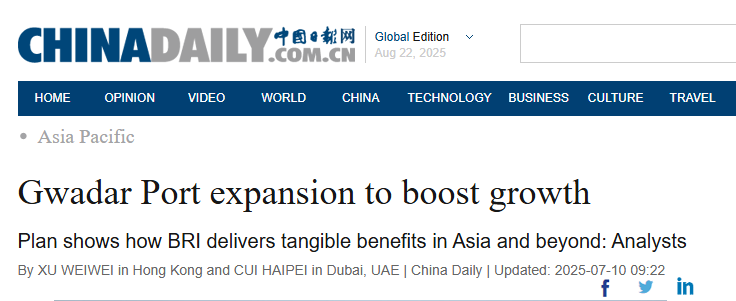
Source: ChinaDaily
Economic Diversification
Phase II looks inward at Pakistan’s economy. The Economic Survey 2023-24 highlighted its focus on agriculture and industry. Pakistan is partnering with Chinese firms on crop processing, livestock, and fisheries to boost agri-exports. SEZs in Karachi and Balochistan will host high-tech and light manufacturing industries. CPEC’s energy projects, including hydro dams and LNG terminals, complement these goals. They address chronic power and water shortages, making industry more viable. The CPEC Portal stresses expediting ML-1 and water-storage projects as deeply linked to Pakistan’s progress and development. Better infrastructure and trade access aim to drive higher-value growth beyond construction or mining.
Gwadar and Energy Projects Under CPEC Phase II
Gwadar Deep Seaport is becoming a smart trade hub linking the Arabian Sea and Indian Ocean with western China. The new Gwadar International Airport will handle domestic and international flights, boost prosperity, create jobs, and reflect strong Pakistan-China ties. Energy projects run in parallel. The Chashma Nuclear Power Plant Unit-5 will add 1,200 MW and generate 40,000 jobs during construction. The $2 billion Suki Kinari Hydropower Station is now operational. These projects show close cooperation in infrastructure, energy, and employment. CPEC Phase II stresses innovation, sustainability, and inclusive growth, positioning Pakistan as a regional hub. Political unity is vital to protect these gains, as instability could undermine progress and reverse achievements.
Strategic Outcomes
CPEC Phase II has clear strategic logic. Turning Gwadar into a transshipment hub strengthens Pakistan’s leverage and economy at Asia’s crossroads. Experts say Gwadar’s expansion will deepen its integration into CPEC and the broader Belt and Road Initiative. The port will shift from symbolic to practical. ChinaDaily cites an analyst noting Phase II shows how the BRI can deliver tangible benefits across Asia and beyond. Pakistan aims to link Karachi and Gwadar more tightly to China’s markets and Persian Gulf trade.
CPEC Phase II: Opportunities and Challenges
The China-Pakistan Economic Corridor (CPEC) is Pakistan’s largest infrastructure project. It links South Asia, Central Asia, and the Middle East. Phase II focuses on economic diversification, maritime trade, the blue economy, and agriculture. Kazakhstan benefits from alternative transit routes and energy collaboration. Iran uses Pakistan as a bridge to China. Azerbaijan and Turkmenistan offer untapped opportunities in energy, trade, and digital sectors. Challenges include regional instability, security risks, environmental impacts, and bureaucratic delays. Competition comes from corridors like IMEEC, NSTC, TITR, and the Middle Corridor. Improving the investment climate will help Pakistan expand trade, diversify markets, and promote sustainable growth.
Conclusion
CPEC Phase II aims to revive the Silk Route in Pakistan’s favor. The corridor will transport goods, industries, and investment between China, South Asia, and the Middle East. Pakistan’s planners emphasize that a fully developed Gwadar corridor and modernized railways will boost trade volumes and anchor the country in regional supply chains. The strategic logic of Phase II is to leverage Pakistan’s geography as a bridge between China and Arabia. This aims to secure jobs, exports, and connectivity for decades to come.
You May Like To Read: Chinese FM Wang Yi in Islamabad for Sixth Round of Strategic Dialogue



